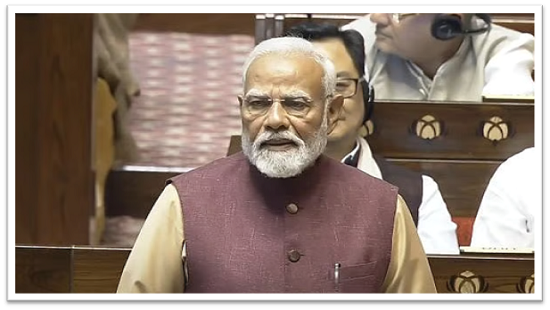
PM Modi to Virtually Launch “Mumbai One” Integrated Common Mobility App on October 8
In a landmark move for Mumbai’s mobility transformation, Prime Minister Narendra Modi will virtually inaugurate the “Mumbai One” Integrated Common Mobility App on October 8, marking a major leap in unifying the city’s fragmented public transport systems under one digital umbrella.
Developed under the coordination of the Mumbai Metropolitan Region Development Authority (MMRDA) and in collaboration with 11 Public Transport Operators (PTOs), the app promises to redefine how millions of Mumbaikars navigate the city — from trains to metros, from buses to monorails — using a single digital interface.
A Digital Leap in Urban Transport Governance
The “Mumbai One” app reflects a deeper shift in how cities approach mobility — not just as an engineering problem, but as a governance challenge requiring coordination, technology, and behavioural change. Mumbai, a megacity that records over 80 lakh daily public transport trips, has long struggled with disconnected ticketing systems and operational silos among various transport agencies.
With “Mumbai One,” authorities aim to integrate this ecosystem digitally, offering commuters a one-stop platform for planning, ticketing, and tracking their journeys in real time. This digital-first approach aligns with the National Urban Transport Policy and India’s broader Smart Cities Mission, which advocate for multi-modal integration and citizen-centric service design.
Swati Lokhande, Chief Public Relations Officer of MMRDA, said the app was designed “to enhance convenience, safety, and efficiency” for everyday commuters while ensuring that the user experience remains intuitive and inclusive.
Participating Transport Operators
The platform brings together 11 major public transport systems operating within the Mumbai Metropolitan Region (MMR) — one of the most complex transit networks in Asia. These include:
• Mumbai Metro Lines 1, 2A, 3, and 7
• Mumbai Monorail
• Navi Mumbai Metro
• Mumbai Suburban Railway
• Bus services operated by:
o BEST (Brihanmumbai Electric Supply and Transport)
o Thane Municipal Transport (TMT)
o Mira-Bhayander Municipal Transport (MBMT)
o Kalyan-Dombivli Municipal Transport (KDMT)
o Navi Mumbai Municipal Transport (NMMT)
By integrating ticketing and travel data across these operators, “Mumbai One” aims to bridge long-standing gaps between urban transport agencies, creating a digitally harmonised mobility ecosystem for the first time in the city’s history.
Key Features: Designed for the Daily Commuter
Officials involved in the project have highlighted that the app is not just a digital wallet for ticketing, but a mobility platform — blending real-time data, dynamic routing, and safety tools to make public transport both smarter and safer.
Key Features of the “Mumbai One” App:
• Integrated Mobile Ticketing: Enables passengers to purchase and validate tickets across multiple transit systems using a single platform.
• Digital Transactions: Reduces the need for physical ticket queues by promoting cashless, app-based payments.
• Dynamic Multimodal Ticketing: Allows commuters to plan and pay for trips involving multiple modes of transport — for example, combining Metro, Suburban Rail, and Bus in one journey.
• Real-Time Travel Updates: Provides live information on train or bus delays, estimated arrival times, and suggested alternative routes during congestion or service disruption.
• Interactive Map Interface: Displays nearby transit stations, tourist attractions, and key public facilities, enhancing accessibility for both residents and visitors.
• Emergency SOS Feature: Offers a built-in safety mechanism allowing users to alert authorities or emergency contacts instantly in case of distress.
Transforming Public Transport Through Technology
The “Mumbai One” platform reflects how digital innovation can reshape public trust and usage patterns in urban transport. By providing predictability, transparency, and efficiency, it encourages commuters to shift away from private vehicles — a key step towards reducing congestion, lowering emissions, and improving air quality across the MMR.
It also builds on the Digital India framework, integrating UPI-enabled payments, AI-driven route optimisation, and data analytics to track commuter flows and inform better infrastructure planning. Officials at MMRDA noted that such data-driven insights could help authorities reconfigure bus frequencies, optimize metro schedules, and plan last-mile connectivity with precision.
Moreover, by consolidating digital ticketing across agencies, “Mumbai One” is expected to cut down on administrative costs, curb revenue leakages, and standardize reporting mechanisms — aligning with global best practices in mobility governance.
A Foundation for India’s Mobility Future
The launch of “Mumbai One” is not an isolated initiative but a prototype for India’s future transport ecosystems. It aligns with the Centre’s vision of creating Unified Metropolitan Transport Authorities (UMTAs) in major cities — autonomous entities that manage and integrate various modes of transport under a unified digital and regulatory framework.
Experts believe this model could soon be replicated in metropolitan regions like Delhi-NCR, Bengaluru, Pune, and Chennai, each of which faces similar challenges of fragmentation and commuter fatigue.
As cities continue to urbanize — with India projected to have 600 million urban residents by 2036 — the demand for reliable, efficient, and integrated public mobility will only intensify. Apps like “Mumbai One” demonstrate how governance, technology, and citizen behaviour can intersect to make urban transport smarter and more humane.
Conclusion: From Fragmented Transit to Integrated Mobility
The “Mumbai One” initiative represents a crucial step in reimagining Mumbai’s transport future — from fragmented operations to a seamless, integrated commuter experience. It transforms the act of travel from a daily struggle into a coordinated public service — efficient, data-driven, and citizen-centric.
By uniting agencies, digitizing ticketing, and empowering commuters, the initiative lays the foundation for a smart mobility ecosystem that mirrors Mumbai’s global aspirations. Ultimately, “Mumbai One” is more than an app — it’s a governance innovation that could define how India’s megacities move, connect, and grow in the decades ahead.





